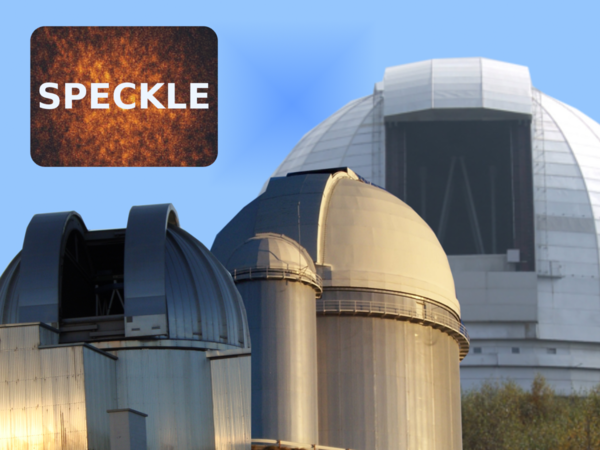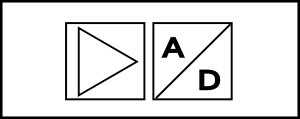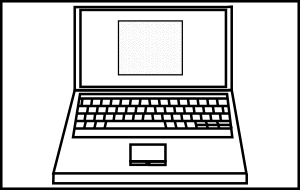
Speckle Interferometry
Speckle interferometry allows the reconstruction of high resolution diffraction-limited images. Due to atmospheric turbulences, the image resolution (seeing) degrades even for large telescopes to about 1 arcsec at visible wavelengths. However, the theoretical diffraction-limited angular resolution is given by lamda/D. For example the diffraction limit for observations at 600 nm wavelength at a telescope of 6 m diameter is 0.02 arcsec, a factor of 50 better than the seeing limit.
The planar wave coming from an object is deformated by the atmosphere, which results in constructive and destructive interference on the imaging sensor - the so called speckles. For short exposure times the atmospheric turbulences are "frozen" and the high resolution information without atmospheric effects can be reconstructed from the speckles. However, a large number of short exposure images is required to reconstruct the final diffraction-limited high-resolution two-dimensional real image.
Speckle interferometry imposes special requirements on the equipment, such as low noise, low power and fast readout. To fulfill these requirements our department developed the optics, electronics and software for our speckle interferometry observations.
 |
Object classes: extragalactic objects, young stellar objects, evolved stars |
 |
Atmosphere |
 |
Telescope: 2.2m, 3.6m, SAO, NTT, MMT |
 |
Optics: Optics developed by our group |

|
|
 |
Imaging sensors: HAWAII-1, PICNIC, CCD, EMCCD |

|
|
 |
Electronics: Readout Electronics developed by our group |

|
|
 |
Online Software: MoDAS software developed by our group |

|
|
 |
Data Reduction Software: Building Block by our research group |
Speckle Cameras
Imaging sensors for bispectrum speckle interferometry applications usually require a combination of low readout noise and fast readout. Other important requirements are high dynamic range and low dark current. The readout noise is critically important for the study of faint objects. These facts were a strong motivation and justification for developing optimized electronics for optical and infrared speckle cameras. Using the techniques presented below, we have developed and built several camera electronics that enable us to obtain bispectrum speckle interferometry observations of unprecedented resolution and SNR.
Integration time
Typical exposure times for speckle observations usually range from a few ten milliseconds for bright objects to as long as hundreds of milliseconds (mainly limited by the speckle lifetime) for faint objects. The short integration time and the fast readout lead to high frame rates and cause a high load on the data acquisition computers.
Pixel readout rate
The readout rate typically depends on different factors, like the bandwidth limitations of the imaging sensors, ranging from 100 kHz to a few MHz, the SNR in the speckle interferograms (relation of photon shot noise to readout noise) or the desirable frame rate and integration time. To obtain the best results in terms of readout noise, the bandwidth of the analog amplifiers of the camera electronics has to be adapted to the pixel clock frequency. With a pure analog lowpass filter, an adjustable bandwidth, especially for higher orders, can hardly be realized. Therefore, other filter techniques using a combination of analog and digital filters were investigated.
Dynamic range
The dynamic range is limited by the resolution of the ADC (typically 16 bits), the full well pixel capacity (depending on the reset voltage), the readout noise or the linearity requirements (e.g., less than 1% integral non-linearity). The ADC must be selected very carefully as the spurious-free dynamic range is generally less than the nominal 16-bit resolution.
Noise
The temporal noise of recorded data consists of fundamental photon shot noise that varies as the square root of the number of integrated photoelectrons, the detector noise, and the noise introduced by the readout electronics. With modern amplifiers and careful shielding and grounding (including the fact that digital signals must be treated as analog signals), the noise contribution from the readout electronics can be pushed far below the detector noise and is therefore negligible. Other noise contributions are:
- Reset noise. Originates from the reset voltage on the capacitor C of the charge-to-voltage converter inside the imaging sensor. The rms voltage is equal to (kT/C)1/2, where T is the temperature. This so-called kTC noise can be eliminated by applying the Correlated Double Sampling (CDS) technique.
- 1/f noise (or flicker noise). Becomes important for long integration times (a few hundred milliseconds and more). It can even dominate the transistor white noise. Therefore, the detector bias control and other voltage supplies must carefully be designed to minimize this effect down to frequencies of less than 1 Hz.
- Transistor white noise. Proportional to the square root of the amplifier signal bandwidth. Low readout noise can therefore be achieved by reducing the bandwidth, resulting in a low pixel clock and a low frame rate.
- Amplifier glow. Denotes the event that occurs when hot electrons in the output amplifier transistors of an imaging sensor (especially for infrared) emit photons which can be detected by the nearby pixels. This can be avoided by using external amplifiers in the case the imaging sensor provides an extra unbuffered output.
- Fixed pattern noise. Related to randomly distributed, time-invariant offsets in the individual pixels. It can be reduced by proper offset measurements of each pixel.
- Multiple non-destructive reads at the beginning and at the end of the integration time can be averaged to reduce the noise of the imaging sensor.
- Correlated noise. Any electromagnetic disturbance originating from other electronics, like temperature controllers, motor controllers, pumps, or other devices, can potentionally degrade or limit the effective performance of the imaging sensors. Electromagnetic interference is mostly visible as (time dependent) regular moiré structures in 2-D images.